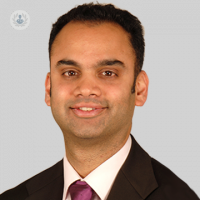What you need to know about Mohs surgery and slow Mohs surgery
Autore:Mohs surgery is a technique used to remove skin cancer or cure it: it is a specialised technique which was was invented by Frederic Mohs in the United States. The surgery is highly effective and considered the ‘gold standard’ for many higher risk skin cancers. Here, expert Mohs surgeon Dr Raj Mallipeddi explains how Mohs surgery is performed, and why slow Mohs surgery is recommended in certain cases.

How is Mohs surgery performed?
Mohs surgery tends to be used for higher risk types of skin cancer, which may be in difficult areas such as the eyes, nose, lips, ears or other parts of the face - areas where we need to try and preserve as much skin as possible. Mohs surgery is performed by excising (removing) the skin cancer, then processing the tissue into slides, which the Mohs surgeon analyses. This tissue is then ‘mapped’ and compared to the patient’s skin, so the surgeon can see if there is any tumour remaining. The surgeon can then remove any remaining tissue, through looking at the slides and comparing, until the area is completely clear of cancer. The wound may then be closed using one of the following methods:
- Closing the wound with stitches from one side to the other known as direct closure
- The use of techniques such as ‘flaps’ where cuts are made in different directions to pull skin in
- Performing a skin graft where skin is taken from elsewhere on the body, to then be sewn on to the defect, effectively resurfacing it
What is the cure rate for Mohs surgery?
For skin cancers which are primary or previously untreated, Mohs surgery often has a 99% success rate. For those skin cancers which have been treated by other methods but then have come back or recurred, this may drop slightly to around 95%.
The cure rate is one of the reasons behind which Mohs surgery is advantageous, but it is also worth considering that by taking less skin, the surgeon can create smaller wounds in the patient and potentially leave more minimal scarring. By cutting the skin invariably some form of scar will result, which is true of any type of surgery. The question really is how good the scar can be once it is fully healed. By minimising the amount of skin removed, this may potentially help create less of a scar.
What is slow Mohs surgery?
Mohs surgery is most often performed with what is known as ‘frozen sections’. In the usual method of Mohs surgery, when skin cancer is removed, it is processed in the Mohs laboratory, which is located very close to the theatre where the skin cancer was removed or excised and the tissue is frozen before it is processed.
Frozen sections can be produced very rapidly, often in under one hour, allowing the results to be available quickly. On the other hand, slow Mohs makes use of processing with paraffin section. Paraffin sections are routinely used in regular pathology, for example, when a patient has a skin biopsy or standard excision without Mohs surgery. Paraffin section processing takes at least 24 hours, and sometimes much longer, because the tissue that is being removed has to be fixed for a certain period of time.
Why is slow Mohs surgery used?
Slow Mohs surgery may be used in certain circumstances, for example if the particular tumour pathology is better visualised with paraffin sections compared to frozen sections. This ensures greater accuracy during the removal.

